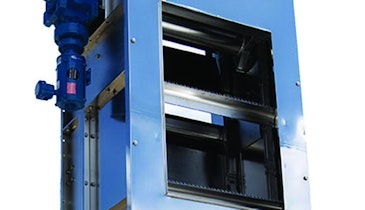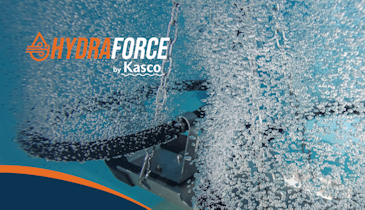Interested in Tanks?
Get Tanks articles, news and videos right in your inbox! Sign up now.
Tanks + Get AlertsWhen things are running smoothly it’s easy to overlook common maintenance chores and rationalize that it’s not worth the time to regularly inspect and replace parts. But nothing could be further from the truth. The reality is that most facilities have several pumps performing various functions that are integral to the successful operation of the plant. If a pump malfunctions, it can cause of an entire plant shut down.
Pumps are the cogs in the wheel that keep your facility functioning efficiently, whether they are used for manufacturing processes, HVAC or water treatment. To keep pumps running properly, a regular maintenance schedule should be implemented and followed. Here are seven easy steps to keep your pumps running smoothly:
1. Determine maintenance frequency
Consult the original manufacturer’s guidelines, and consider the timing to schedule your maintenance. Will lines or pumps have to be disabled? Select a time when the system is down, and use common sense when deciding the time and frequency.
2. Observation is key
Get to know your system and make a point to observe your pump while it is still running. Make note of leaks, unusual sounds or vibrations and unusual odors.
3. Safety first
Make sure machines are properly shut down before performing your maintenance and/or systems check. Proper isolation is important not only for electrical systems, but for hydraulic systems as well.
4. Mechanical inspection
Check that mounting points are secure, inspect the mechanical seal and packing, inspect the pump flanges for leaks, inspect the couplings, and inspect and clean filters.
5. Lubrication
Lubricate the motor and pump bearing per manufacturer’s guidelines, and be sure not to over-lubricate. More bearing damage occurs as a result of overgreasing than undergreasing. If the bearing has a vent cap, remove the cap and run the pump for 30 minutes before reinstalling cap. This will let excess grease work its way out of the bearing.
6. Electrical/motor inspeciton
Check that all terminations are tight, and inspect motor vents and windings for dust/dirt build-up and clean according to manufacturer’s guidelines. Also, inspect starter/contractor for arcing, overheating, etc., and use a megohmmeter on the windings to check for insulation failure.
7. Replace damaged seals and hoses
If any hoses, seals or O-rings show wear or damage, replace immediately. Using a temporary rubber assembly lubricant will ensure a tight fit and prevent leaks or slips.
International Products Corporation (IPC) offers a unique line of temporary rubber lubricants. Our P-80 lubricants are available in six water-based formulas that offer superior lubrication and are compatible with various surfaces. P-80 lubricants are environmentally friendly, and most are biodegradable.
There are many lubricants out there, including good old soap and water, so why do you need specially formulated rubber lubricants? The facts speak for themselves:
P-80 Lubricants
- Reduce friction by 70 percent
- Provide superior temporary lubrication, are environmentally friendly, safe for workers and come in many biodegradable formulas
Solvents
- Reduces friction by 30 percent
- Provide poor lubrication, contain high VOCs, may be flammable and poses possible health risks
Soaps and detergents
- Reduces friction by 30 percent
- Provide inconsistent, nominal lubrication and might reactivate when wet
Petroleum distillates
- Reduces friction by 60 percent
- Provide lubrication, but are often incompatible with materials, leave a heavy residue and sustain lubrication
P-80 rubber lubricants are temporary; once dry, the lubrication ceases and parts stay in place. Additionally, these lubricants will not reactivate in the presence of water, and they will not dry out rubber parts. Keep your facilities running smoothly. Try P-80 temporary rubber assembly lubricants for your pump maintenance needs. Visit www.ipcol.com to speak with a specialist and request a sample for testing. Download our free ePaper and case study discussing P-80 for pump seal maintenance.





